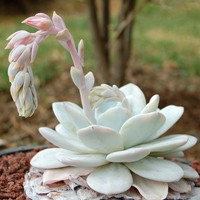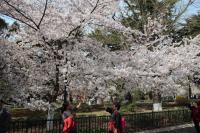How Far Apart Should Elm Trees be Planted?
Elm trees are majestic and strong trees that are commonly used for landscaping, as shade trees, and as street trees. However, planting elm trees requires careful consideration of several factors such as the species of elm, soil, drainage, and planting location. One of the most important questions that homeowners and growers ask is how far apart should elm trees be planted?
Factors that Affect Elm Tree Spacing
The distance at which elm trees should be planted depends on several factors, including:
The mature size of the elm tree species
The soil type and condition of the planting location
The intended use of the planting location, whether as a shade tree or ornamental tree
The availability of nutrients, water and sunlight,
The proximity to buildings, powerlines, and other trees.
If you're planting elm trees for the first time, it's essential to take into account these factors to determine their spacing.
Elm Tree Spacing Guide
The following spacing guidelines are applicable for several species of elm trees, but you should always consult a professional arborist for recommendations on your specific site:
Shade Trees
If you're planting elm trees as shade trees, it's essential to consider their mature size. For fast-growing elm species like the 'American Elm,' the minimum distance between trees should be 40 feet. Slow-growing species like the 'Japanese Elm' can be placed 20-25 feet apart.
Spacing trees too close together can lead to competition for resources, stunted growth, and poorly developed root systems. Conversely, spacing the trees too far apart wastes space, leading to a sparsely covered area.
Ornamental Trees
For planting elm trees as ornamental trees, a closer spacing is recommended to create a more visually stunning effect. Elms like the 'Siberian Elm' can be planted at 15-20 feet apart, leading to a natural canopy when mature.
Street Trees
When planting elms along roads and streets, the minimum spacing should be 25-30 feet to prevent interference with power lines and other structures. Also, the trees should be pruned to develop a dominant central stem and an elevated canopy above the roadway.
Conclusions
Planting elm trees is an essential investment for homeowners and gardeners. Proper spacing of trees leads to healthy growth, proper root development, visual appeal, and helps prevent unwanted competition for resources. The spacing of elm trees should always be determined with help from professionals to ensure that the trees meet the owner's purpose and requirements.

 how many times do yo...
how many times do yo... how many planted tre...
how many planted tre... how many pine trees ...
how many pine trees ... how many pecan trees...
how many pecan trees... how many plants comp...
how many plants comp... how many plants can ...
how many plants can ... how many plants and ...
how many plants and ... how many pepper plan...
how many pepper plan...






























